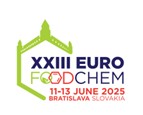Vedecký časopis - archív
Journal of Food and Nutrition Research
Súhrny čísla 1 / 2013
RAJCHL, A. – ČÍŽKOVÁ, H. – ŠEVČÍK, R. – JODASOVÁ, A. – VOLDŘICH, M.
Analytical data for plum paste as a tool for evaluation of plum paste authenticity
Journal of Food and Nutrition Research, 52, 2013, č. 1, s. 71-77
Aleš Rajchl, Department of Food Preservation, Institute of Chemical Technology Prague, Technická 5, 160 28 Prague 6, Czech Republic. E-mail: ales.rajchl@vscht.cz; Phone: +420 220 443 013; Fax: +420 233 337 337
Súhrn: Plum (Prunus domestica L.) is a nutritionally and technologically important fruit. In the Czech Republic, there has been a long tradition of growing plum trees and manufacturing plum-based products. Plum paste is traditionally produced by boiling for a long period of time and contains only plums. In this study, we measured chemical composition and colour of sets of samples of plum paste focusing mainly on the following markers: soluble solids, ash, organic acids (malic, citric, shikimic), saccharides (glucose, fructose, saccharose, sorbitol), minerals (potassium, calcium, magnesium, sodium, phosphorus), phloridzin, rutin, 5-hydroxymethylfurfural, titratable acidity and total amino acid content. Plum paste was found to be a nutritionally rich source of saccharides (from 469.0 g•kg-1 to 571.5 g•kg-1), organic acids (from 9.32 g•kg-1 to 19.58 g•kg-1 expressed in grams of malic acid) and minerals (from 2.98 g•kg-1 to 9.26 g•kg-1 expressed as ash), in particular potassium (from 1232 mg•kg-1 to 4299 mg•kg-1). From a nutritional point of view, plum paste contains a very advantageous ratio of sodium to potassium (K/Na = 49.3). The aim of the study was to evaluate the chemical composition and quality of plum paste in order to fill in the missing data in food composition tables, and to facilitate authentication of plum products.
Kľúčové slová: Prunus domestica L.; chemometry; colour; phloridzin; adulteration
Na stiahnutie:
jfnr20131p_6.pdf (PDF, 168.69 Kb, 2204x)










